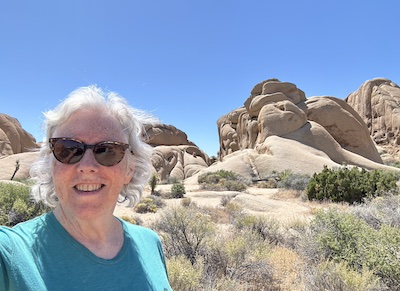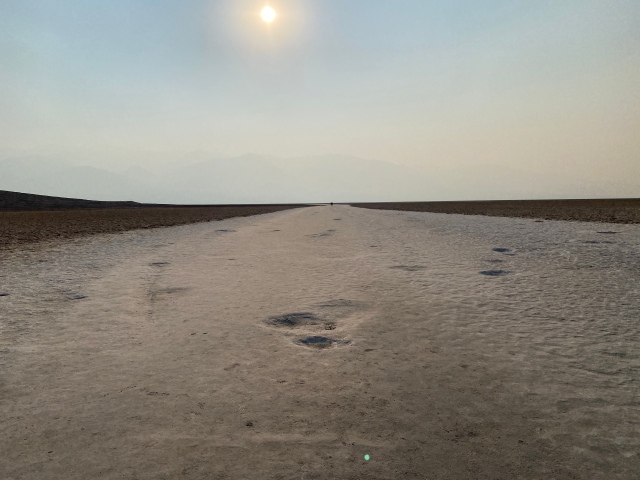I went to Joshua Tree National Park and the town of Joshua Tree in Southern California in early June of 2024. It’s always interesting to travel through a desert but when temperatures are starting to hit triple digits, it adds an element of danger. I remember traveling through Death Valley a few years ago when it was 120 degrees. You think twice before you head out that you have plenty of water, the tire pressure is good, gas tank full and check for sunscreen. Cell phone coverage is non-existent and there are no restaurants or gas stations for 50 miles. It pays to be prepared.
Here is what I found in Joshua Tree:

Wilderness. I entered through the Cottonwood entrance at the southern end of the park. This is definitely the road less traveled. There is a visitor center about 6 miles in but there is about 30 miles of blank wilderness desert for most of the road to get to the heart of Joshua Tree National Park. There are vast swaths of desert that lead to the Coxcomb Mountains and well beyond the immense Pinto Basin. This is all untouched land. I didn’t expect to see so much empty arid desolate land that goes on for as far as the eye can see; there are only a few cacti. I find the entering any National Park from the less traveled entrance has advantages because there has never been a line and I end up traveling the park in the opposite direction from the rest of the crowd.
Cholla Cactus Garden. This is one of the few stops and parking places when entering from the Cottonwood entrance. When you actually walk through the Cholla Cactus Garden, it looks as if someone intentionally planted all these cacti. There were probably thousands of the cacti for miles in every direction. The same cactus for miles. Almost like someone planted them all to harvest them, but it’s in the middle of the desert in the middle of nowhere. It’s intimidating walking on the trail through the garden because their barbed cactus spines are easily detached or “jump” off the plant onto a passerby.
Rock Formations. When I turned the corner and got on Park Boulevard, the entire landscape transformed into what can only be referred to as Bedrock or the land of where the Flintstones resided. It went from desert wilderness to jumbled rock formations. There were hundreds of these rock piles in various sizes and dimensions. I found an interesting video on how the formations formed over millions of years but basically the tectonic plates moved and the magma eventually belched up and then cracked to create these formations. I would drive a half mile and there would be formations and then another half mile and even more formations. There are no bad spots to pull off and walk around; they’re all other worldly.
Joshua Trees. The plant for which the town and National Park are named is not actually a tree but a succulent Yucca Brevifolia. 19th Century Mormons named them after the biblical figure because they believed that the outstretched tree limbs guided them on their westward journey. I’m sure that there are thousands of Joshua Trees in the park and in the surrounding area. Sometimes I would see one lone tree in front of a rock formation or come across several acres of trees seemingly marching across the landscape. Some are tall with many branches and some are low to the ground with just a palm frond top. Unusual and fascinating.
The Town. I camped in the town of Joshua Tree which seems like a desert oasis for rock climbers, artists and off grid folks. There was an enormous farmers market on the Saturday that I arrived with produce and treasures for sale. The actual main visitors center for the National Park is in the town and outside of the park itself which is very unusual. It’s a bit confusing because you have the actual plant, the town and the national park all referred to by the same name.
It was an interesting adventure through the park. There was one area I didn’t get to visit because RVs were not recommended to drive to Keys View overlook which has a panoramic view of the Little San Bernardino Mountains. As I learned in White Sands National Park, be sure to read if a road is recommended for RV’s, if not it’s likely to have hairpin turns, steep inclines or, as in White Sands case, ten miles of unpaved roads across the dunes. Regardless the landscape and flora were epic.

